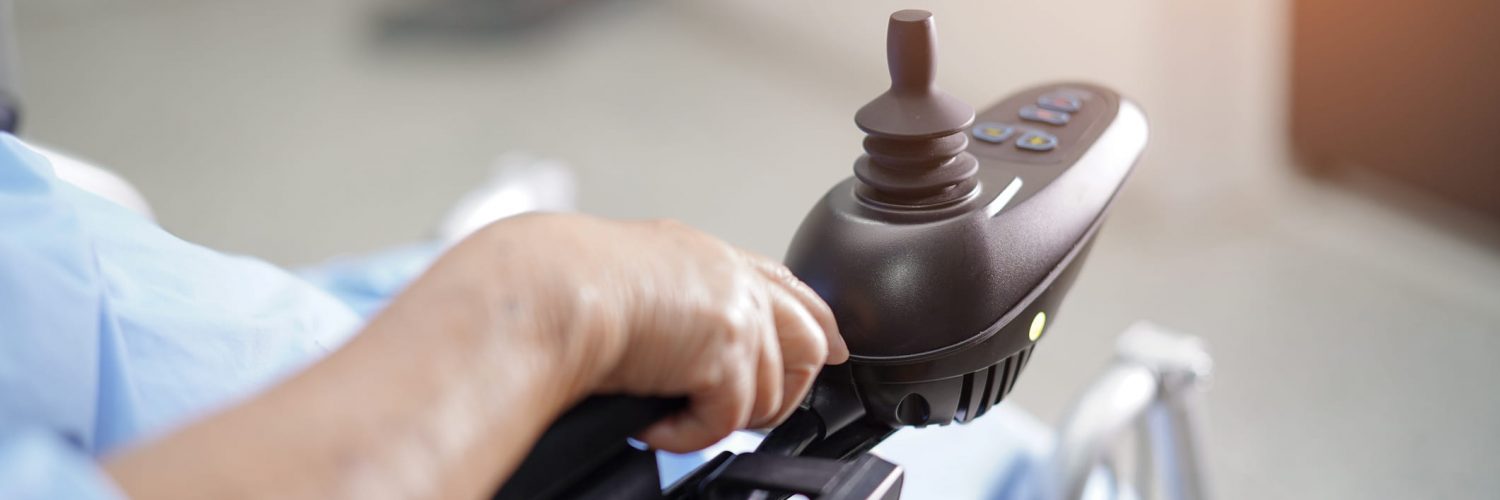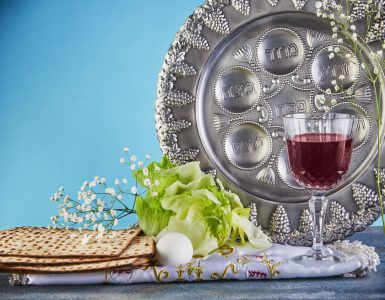Blink Once for Yes, Twice for No: ALS Assistive Devices & Shabbos
Amyotrophic lateral sclerosis (ALS), popularly known as “Lou Gehrig’s Disease”, is a severe and incurable degenerative disease that mainly affects middle-aged and older adults. The causes of the disease are not clearly known, although in some patients a genetic factor may be identified. The disease affects the nerve cells of the brain and spinal cord that are responsible for muscle movement. As the disease progresses, it affects and paralyzes all the muscles in the body, including those that control movement, speech, eating, and breathing.
The motor neurons are the cells through which the brain activates the voluntary muscles in the body. The gradual destruction of these cells by the disease causes paralysis of the muscles. In contrast, sensory neurons remain intact.
The effects of the disease are mild at first but steadily worsen. Symptoms range from muscle weakness (characterized by falls, dropping objects, etc.), muscle spasms, and decreased muscle mass, to difficulty speaking, breathing, and swallowing.
In the advanced stage of the disease, the ability to speak, swallow, chew, and even breathe is severely impaired, but there is no impairment of sight, hearing, touch, taste or smell. Most patients do not experience cognitive impairment.
These symptoms make the life of a patient with advanced ALS indescribably difficult. His senses are intact, but he is imprisoned in a body unable to function or communicate with its environment.
To alleviate the suffering of ALS patients, special devices have been developed that allow them to communicate with others. These devices are based on tiny, sensitive cameras that capture the movements of the patient’s eye and eyelid and convert them into messages that appear on a computer monitor. The patient learns the “language” and uses it to communicate with his surroundings. Newer devices use infrared light to track and translate pupil movements to move the cursor, similar to the action of a mouse on regular computers. (These solutions are also technically feasible for patients with spinal cord injuries, cerebral palsy, multiple sclerosis, or any disability that prevents normal use of a mouse.)
However, these devices do not help cure the disease but only alleviate the patient’s suffering and allow him to communicate with his surroundings. May a patient use these devices on Shabbos?
It should be noted that an ALS patient is essentially considered a Choleh sheYesh Bo Sakana regarding anything related to his disease.[1] Therefore, any treatment designed to slow or prevent the progression of the disease may be performed at any time, including Shabbos, particularly given the fact that the treatments, at most, only violate Issurei d’Rabbanan. Therefore, an ALS patient may perform specific exercises, including hydrotherapy (if he needs it on a daily basis), use respiratory support devices, and so on. Presumably, this would not apply to the electronic devices we have described which do not treat the disease.
In order to answer our question, we first need to examine the status of a Melacha performed in an unusual fashion – i.e. by means of eye movement. In our essay for Parshas Beshalach 5779[2], we discussed an innovative device that is operated by a person’s thoughts (Machshava), and cited several, fascinating sources regarding the question of whether a Melacha performed through a Machshava constitutes Chilul Shabbos. We discussed B’nei Yisrael’s cooking Man in the desert that was performed by means of Machshava according to the Mechilta, and noted that they were specifically instructed to “cook it” before Shabbos. The Moshav Zekenim (Bamidbar 8:11) explains:
Why was it forbidden to think about it on Shabbos so that it would assume a taste of a cooked food? We may answer that since it would not be transformed except by means of his speech (“Dibburo”), it was considered a constructive act.
The Moshav Zekenim implies that acts wrought by Machshava do not constitute Melachos, but those wrought by Dibbur do.
The Kli Chemda discusses the Mechilta at length and examines the distinctions which may be drawn between the preparation of the Man and the general question of performing a Melacha by means of Machshava (see our earlier essay). This essay will focus on his contention that any Melacha performed by Machshava should be considered ki’l’Achar Yad (performed in an unusual way) and only Assur mi’d’Rabbanan. This principle is summarized by the Shulchan Aruch haRav (beginning of O.C. 301):
All of the Melachos are only forbidden mi’d’Oraisa if they are performed on Shabbos in the manner that they are performed during the week. But if a person performs them differently than the way he performs them during the week – in a way in which they would not be performed during the week – he is exempt from [punishment] mi’d’Oraisa but it remains Assur mi’d’Rabbanan[3], lest he come to perform it as he does during the week. How so? For example, if he carries an article on the back of his hand, with his feet, mouth, in his armpit, shoe, etc. which is not the manner in which he would carry it during the week, he is exempt, though his act was forbidden. However, if he carries foods in his mouth, he is liable, as this is also the manner in which they are carried during the week.
Ostensibly, this would apply both to acts performed by means of Machshava and those performed by means of speech or eye movement (unless the acts in question are usually performed by those means). However, the Kli Chemda contends that regarding the Man, the use of Machshava to cook it was not considered ki’l’Achar Yad because this was the regular way in which it is cooked – “zehu bishulo”.
In fact, the parameters of ki’l’Achar Yad, unlike the general rules of Hilchos Shabbos (such as Melacha sheEina Tzricha l’Gufa, etc.), do depend on the Metzius (the given reality, which may be subject to change), and on each person and situation. For example, with regard to the Melacha of Koseiv (writing), the Rambam rules (Hilchos Shabbos 11:14) that if a right-handed person writes on Shabbos with his left hand, or a left-handed person writes with his right hand, he is exempt. If an ambidextrous person writes with either hand, he is liable. We see that there is no set Halachic parameter that determines how a person must write in order to violate Shabbos – it depends on the person in question and what would constitute a Shinui for him. (The Rambam’s ruling is based on the Gemara in Shabbos 103.)
For this reason, the Poskim agree that typing on a computer or smartphone is not a Shinui, even though it is performed with two hands, as this is the normal method of typing. Therefore (assuming we consider words that are typed on a digital screen to have been “written”), a person would be liable for typing on these devices on Shabbos.
At first glance, this implies that the use of a specialized device by an ALS patient would constitute a Melacha, as this is its regular manner of usage. However, there is a significant distinction between the cases. The Man was a fundamentally unusual type of food, and the manner in which it was cooked bears little comparison with the manner in which regular food is cooked. It is therefore reasonable to consider it to have its own specific method of cooking. However, when a left-handed person writes with his dominant hand, it is not considered a Shinui because writing is generally performed in this manner.
The assistive devices used by patients with ALS are examples of the numerous electronic devices and computers that exist today, although they utilize a unique technology to “write” and transmit messages. The overall method they employ in their activation and writing is fundamentally different than that of other devices. Overall, there is no reason to consider these devices individually, and it is therefore reasonable to assume that activating them by means of eye movement would be considered a Shinui, and their use on Shabbos should be permitted.
If we were discussing an Issur d’Rabbanan, we would certainly permit even a Choleh sheEin Bo Sakana to violate the Issur with a Shinui. However, the majority of contemporary Poskim consider the closing of an electrical circuit to be a Melacha d’Oraisa. Regarding Melachos d’Oraisa, the Shulchan Aruch rules (O.C. 328:17):
A patient who is bedridden due to his illness, but there is no danger to his life… we may instruct a non-Jew to treat him, but we may not desecrate Shabbos on his behalf by [performing] an Issur d’Oraisa, even if one of his limbs is in danger.
Regarding whether a Yisrael may perform an Issur d’Rabbanan on his behalf [there are four opinions:] [a] Some permit it even if none of his limbs are in danger. [b] Some say that if there is a danger to one of his limbs the act may be performed, but if not, it may not. [c] Some say if there is no danger to any of his limbs the act may be performed with a Shinui, and if there is a danger to one of his limbs it may be performed without a Shinui. [d] Some say that even if one of his limbs is in danger, one may not perform any act which is based on Torah law, but acts that are not based on Torah law may be performed even if there is no danger to any of his limbs. The third view appears to be correct.
In other words, the Shulchan Aruch cites a dispute as to whether it is permissible to perform a Melacha d’Oraisa with a Shinui on behalf of a Choleh sheEin Bo Sakana. The Shulchan Aruch’s own position is to be stringent[4]. However, other Poskim permit it, such as the Shulchan Aruch haRav (ibid. 19):
But if there is no danger to a limb but he is bedridden, or he is in so much pain that his whole body is affected, a Yisrael may not perform a Melacha d’Rabbanan on his behalf, unless it is performed with a Shinui. [In fact,] if a Shinui is utilized one may even perform a Melacha d’Oraisa, as in the case of a “Gone’ach” (a person groaning in pain) [who may suckle] with his mouth – since he is performing the act in an unusual way it is only an Issur d’Rabbanan.
Other Poskim also concur with the Shulchan Aruch haRav. Some contemporary Poskim (such as Shemiras Shabbos keHilchasa 33, footnote 18) hold that one may rely on this opinion when other options are not available (such as if there is no non-Jew in the vicinity).
HaGaon Rav Asher Weiss Shlit”a explained that this ruling does not apply only to treating the patient’s disease, but also to alleviating his pain. This is similar to the rulingof the Maggid Mishna who contends that one may provide a Choleh sheYesh Bo Sakana with all of his needs on Shabbos – even those that do not help cure his illness. Rav Asher supported his position from a ruling of Rav Shlomo Zalman Auerbach zt”l (Minchas Shlomo 1:9) that those who are hard of hearing may use hearing aids on Shabbos. Rav Shlomo Zalman notes that “one may be lenient because they are considered Cholim sheEin Bo Sakana”, even though hearing aids do not cure a person of his hearing deficiency.
Rav Asher permits the use of specialized devices on Shabbos for ALS patients for the aforementioned reasons. He also added that since we are discussing a Melacha performed with a Shinui which is not a Melacha d’Oraisa, one may also rely on the view of the Beis Yitzchak (Y.D. 31, Hashmatos) and Maharsham (2:247) that completing an electrical circuit on Shabbos is only an Issur d’Rabbanan of Molid. In their view, this case would be a “Shevus diShevus b’Makom Tzorech Gadol” – two levels of d’Rabbanan (Shinui and Molid) in a case of great need which is permitted (Shulchan Aruch, O.C. 307:5). There can be no better example of “Tzorech Gadol” than this.
However,
these devices can obviously only be permitted for the purpose of basic daily
communication with his relatives and caregivers. They should not be utilized
for other purposes, such as typing, surfing the Internet, or other uses of the
computer.
[1] HaGaon Rav Asher Weiss Shlit”a considers an ALS patient to be a Choleh sheEin Bo Sakana as he is not in immediate danger of death. However, he likely only made that designation with regard to treatments that have nothing to do with the patient’s disease. With regard to interventions that are directed toward slowing or stopping the progression of the disease, he would be considered a Choleh sheYesh Bo Sakana. This matter requires further study and is beyond the scope of this essay.
[2] Which can be found on the Bais Medrash website – https://www.medicalhalacha.org/torah-archive.
[3] “Patur Aval Assur”
[4] I.e. a Melacha d’Rabbanan must be performed with a Shinui, unless there is Sakanas Eiver (danger to a limb).














